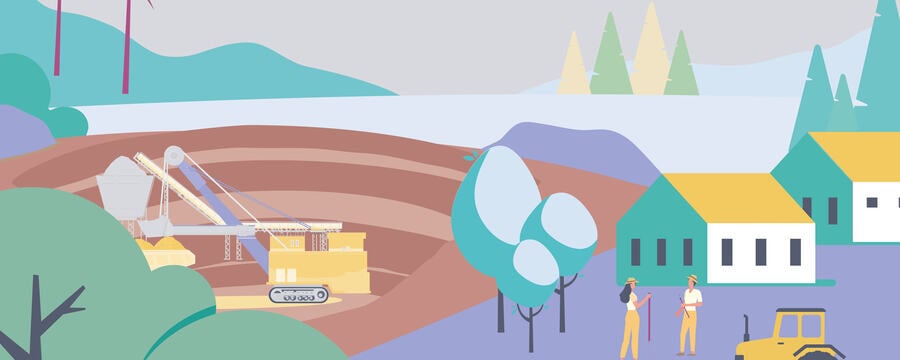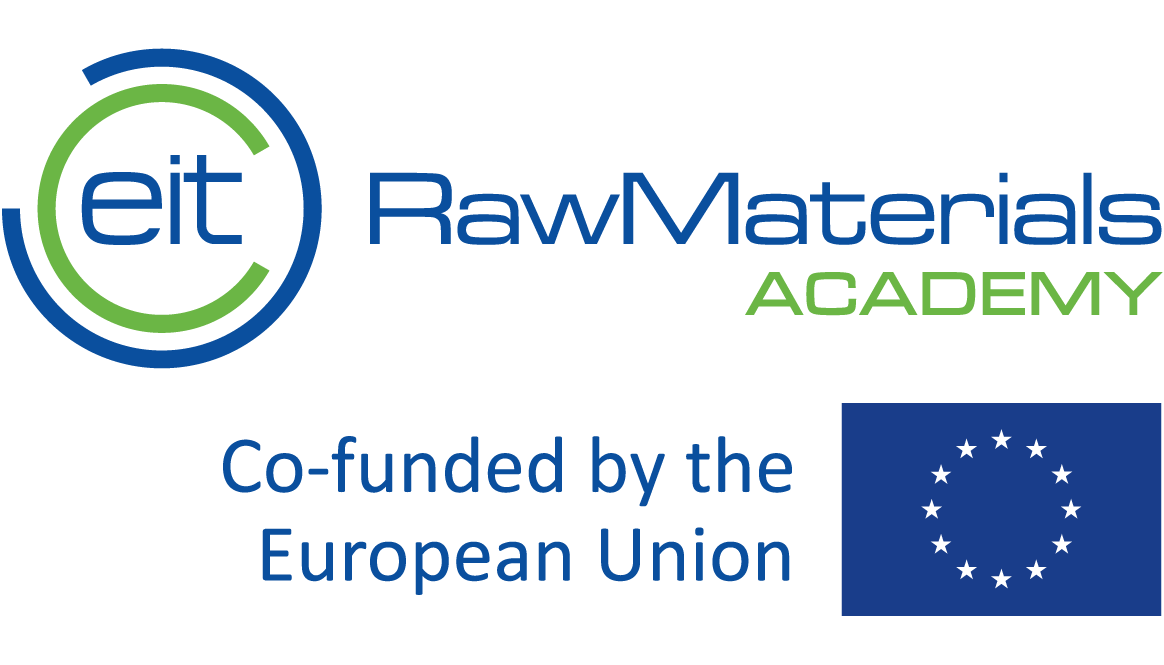Tensions and trade-offs illustrated in three SUMEX sustainability aspects and how to resolve them
Competing land uses
The reasons for tensions and trade-offs related to land use are comprised of the competing land use between sectors/stakeholders, such as problems of dedicating land for extractive actions versus other uses, such as residential areas. These tensions and trade-offs frequently exist between local communities and extractive companies, but also between governments and extractive companies.
According to our research, tensions and trade-offs in Europe mainly occur between government and extractive companies, where large areas are reserved for nature conservation (e.g. Natura 2000 and water body protection areas) and where extraction activities are a low priority in land use planning. Nature conservation and the protection of water bodies are often in conflict with extraction activities, as mineral extraction interferes with, changes, and has impacts on water bodies and natural habitats (eco-system services and biodiversity).
There are different approaches taken by companies and policy makers alike to address issues where mining and nature conservation have the potential to clash. An innovative approach is provided by the ‘Biodiversity Indicator and Reporting System’ (BIRS) developed by IUCN. It provides quarry operators with a tool to identify potential negative impacts on local biodiversity in the vicinity of the operations.
Social acceptance, transparency and trust
All tensions and trade-offs concerning the SUMEX sustainability aspect “Engage in continuous dialogue with stakeholders, create trust grievance mechanisms and shared investigation and problem-solving processes” have a social dimension. The negative perception and image of the extractive industry, as well as the lack of trust and social acceptance towards the extraction of mineral raw materials, are increasingly a challenge for the European extractive industry. The absence of transparency and communication about future plans of the extractive company, impacts on local community, as well as the lack of understanding and unmet expectations of the local community lead to conflicts between extraction activities and local communities.
Therefore, a continuous dialogue with stakeholders, a grievance mechanism, and shared investigations and problem-solving processes are important to strengthen the social acceptance towards the extractive industry and to maintain the social licence to operate. However, other aspects of the SUMEX Sustainability Framework are significant as well, supporting measures to achieve these goals.
A successful stakeholder engagement process needs to be fair, inclusive, and participatory to allow for all concerns by different stakeholder groups to be heard and addressed. For example, the project Minatura2000 drafted a comprehensive guidance document to plan and implement every stage of such a stakeholder engagement process. The document outlines principles and good practices of stakeholder involvement, instructions how to plan this process, as well as how to identify and involve the relevant stakeholders.
Green transition to a sustainable future
Tensions and trade-offs that can be linked to the SUMEX sustainability aspect: “Understanding the role and indicators for extractives in an inclusive Green Economy that exists within Planetary Boundaries”, include thematic areas such as permitting processes, environmental protection and raw material consumption and sourcing. A green transition to a sustainable future and the transition to renewable and green energies, as well as the achievement of the European Union’s climate goals, require mineral resources.
The area of tension and conflict here is that extractives are crucial for the transition to a more sustainable future, but the extraction itself impacts the environment and is not, strictly speaking, considered sustainable, as mineral raw materials are not renewable. Moreover, the European Union still imports mineral resources from countries where extraction activities take place under poor conditions. Reducing the overall consumption of raw materials and sourcing mineral resources responsibly is of great importance.
Many tensions and conflicts between the extractive industry and local communities are caused by low social acceptance of extraction activities and a lack of awareness of the importance and necessity of extractives. Everyday items such as laptops, cosmetics (e.g. toothpaste) and washbasins contain mineral resources, but this is often forgotten.
The Horizon2020 project NEXT has published a toolkit for exploration and mining companies where it highlights research findings on factors influencing the local acceptance of exploration as well as mining. Namely, these factors are the levels of understanding of sustainable development by local communities and society as a whole, as well as their perceptions of the impacts from exploration and mining. These can be both positive, such as employment opportunities, or negative, such as environmental destruction.
Innovative industry approaches to improve sustainability
At this point, we also want to highlight emerging sustainability practices by industry actors who show high commitment to increasing sustainability and have the potential to significantly alleviate some of the most common sustainability issue within the mining sector.
An illustrative example of such an industry effort is the Mining with Nature project by SVEMIN – the Swedish Association of Mines, Minerals and Metal Producers. Recognizing the value and importance of a biodiversity and the destructive potential of extractive activities in this regard, the project presents a roadmap for increased biodiversity. The aim of this project is to achieve a biodiversity net gain in all regions in Sweden where minerals operations are taking place by the year 2030. These efforts focus on avoiding, minimizing, restoring and compensating for impacts on biodiversity, as well as investing in efforts to increase biodiversity in these regions. Furthermore, it pushes for more collaboration between industry, civil society and policy actors, and emphasizes the importance of a coherent policy framework to guide and support industrial actors in these efforts.
Another important push towards increased sustainability in the extractive sector is the electrification of sites. These efforts address a multitude of challenges currently facing the extractive industry. From an economic perspective, it helps avoid increased costs from the rising price of fossil fuels, rising taxes on CO2 emissions and a loss in subsidies. Environmentally, it will reduce CO2 emissions and air pollution affecting local communities. Therefore, the electrification of mines provides a holistic contribution to the global transition towards a low carbon economy and the alignment of the extractive sector with national and international sustainability frameworks.
Boliden has started a trial of using electric trucks to transport ore at their Aitik mine, which has reduced fuel consumption by 800,000 litres per year. The success of this trial has led Boliden to increase their electrification efforts and expand them to their Kevitsa mine. Once the implementation of these new technologies is complete, the company expects to reduce their diesel consumption by 5.5 million litres per year.
Share this
Sustainable Management in the Extractive Industry

Sustainable Management in the Extractive Industry


Reach your personal and professional goals
Unlock access to hundreds of expert online courses and degrees from top universities and educators to gain accredited qualifications and professional CV-building certificates.
Join over 18 million learners to launch, switch or build upon your career, all at your own pace, across a wide range of topic areas.
Register to receive updates
-
Create an account to receive our newsletter, course recommendations and promotions.
Register for free







